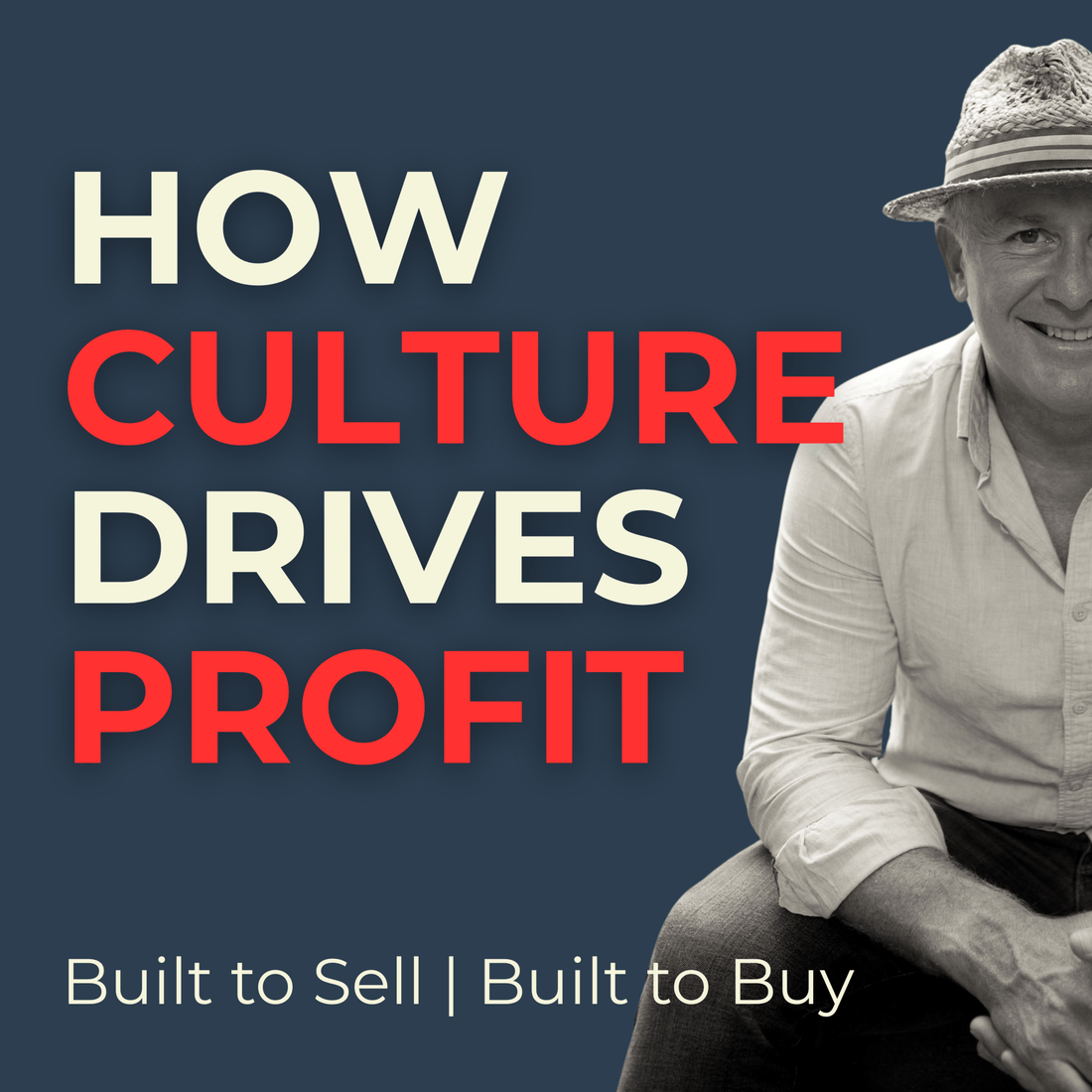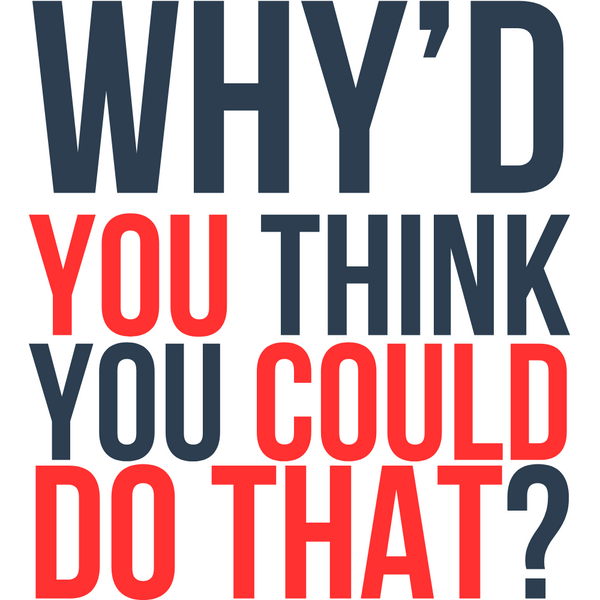
Culture That Sells: Chris Dyer on Transparency, Remote Leadership & Company Valuation
Share
Built to Sell | Built to Buy — Long-form Feature
Culture That Sells: Chris Dyer on Transparency, Remote Leadership & Company Valuation
With Sam Penny · Published 7 October 2025 · ~20-25 min read
What if the real differentiation your business has isn’t your product, but your culture? In this deep dive, Chris Dyer—culture strategist, author, and former CEO—reveals how radical transparency, remote-first leadership, and trust-based systems can create businesses buyers genuinely want to own.
- From Remote Pioneer to Culture Architect
- The Seven Pillars of Thriving Culture
- Why Radical Transparency Matters
- Leading Remote & Hybrid Teams
- Feed Forward, Not Feedback
- Quiet Quitting: Myth vs Reality
- Culture & Business Valuation
- Future of Leadership
- Practical Steps to Build Culture as an Asset
- Listen & Subscribe
From Remote Pioneer to Culture Architect
Chris Dyer’s journey isn’t the typical founder track. Early on, he saw culture not as an afterthought, but as the warp and weft of any organisation’s DNA. At PeopleG2, he built one of the first fully remote companies, navigating the turbulence of the Global Financial Crisis and ultimately selling successfully. Through it all, culture wasn’t a “nice to have” — it was the foundation.
“Culture isn’t soft — it’s a hard-edge advantage that buyers can see and feel.”
That experience shaped his belief: every leader, whether building or buying, needs to treat culture as a system. If companies with stronger cultures outperform during downturns, then culture becomes one of the few durable barriers to competition.
The Seven Pillars of Thriving Culture
At the heart of Chris’s methodology lie his Seven Pillars of Company Culture — a diagnostic framework to assess, build, and maintain high-trust environments. Here’s a breakdown:
- Trust & Safety: Psychological safety so team members speak freely without fear.
- Clarity of Purpose: Shared mission and values that guide decisions and behaviour.
- Belonging & Inclusion: Everyone feels seen, heard and valued for their uniqueness.
- Autonomy & Ownership: People empowered to make decisions without micro-management.
- Feedback & Growth: A learning mindset where improvement and growth are baked in.
- Recognition & Reward: Alignment of praise, incentives and values — not just output.
- Communication & Transparency: Open flows of information up, down, and across the company.
Chris argues that when gaps exist in any of these pillars, they act as “leaks” — energy drains, disengagement, weak decision-making. Fixing one patch without anchoring the system leads to asymmetry and tension.
Why Radical Transparency Matters
One of Chris's more controversial stances: share your financials. Whether P&L, revenue, or cost structure, giving visibility builds trust, accountability, and alignment. When people know what “good” looks like, their decisions improve.
“If your team sees your numbers, they begin to think and behave as co-owners.”
Transparency isn’t just about numbers. It’s decisions, challenges, mistakes. The aim is to reduce hidden agendas and promote open discourse — so problems emerge early, not in silos. In Chris’s experience, this is one of the most powerful levers culture has to influence how teams make trade-offs.
Leading Remote & Hybrid Teams That Outperform
Chris built his remote team ambitions before remote was cool. That early commitment taught him the non-negotiables of virtual leadership. Among the lessons:
- Intentional connection: Instead of left-to-its-own-devices communication, design rituals that keep people close.
- Async clarity: Use structure (pre-reads, agendas, decision logs) so fewer things are left floating.
- Redundancy of context: Document everything — don’t rely on oral handover or hallway chatter.
- Meeting discipline: Be ruthless about meeting formats and timing to preserve energy and clarity.
He even eliminated one-on-one meetings — a radical shift — replacing them with small “Tiger Teams” and “Cockroach Meetings” (quick huddles to tackle issues) that scale up and down dynamically. The upside: less overhead, faster decisions, more fluid collaboration.
Feed Forward, Not Feedback
One phrase Chris used stood out: feed forward — shifting from backward-looking feedback to forward-looking suggestions. Rather than dwell on what someone did wrong, leaders ask: “What’s one small improvement you’ll try this week?”
“Feedback can be averaging — feed forward is directional.”
It’s a subtle shift in mindset. It changes the conversation from judgment to possibility. Over time, it builds a momentum of incremental growth — without the defensiveness that traditional feedback often triggers.
Quiet Quitting: Myth vs Reality
Chris doesn’t buy the “quiet quitting” hype. Instead, he reframes it as misalignment — people slowly disengage when they don’t see impact, ownership, or psychological safety. The symptom is quiet quitting; the cause is culture breakdown.
“They’re not quitting — they’re detaching because they don’t see the wiring.”
The antidote? Plug the leaks. Revisit roles that feel like “busywork,” co-design meaningful contributions, reconnect people to purpose, and re-ignite trust. That moves small pockets of apathy into active contribution again.
How Culture Impacts Business Valuation
For many founders, culture feels soft. But for buyers, culture is money. Chris says a strong culture lowers risk, accelerates scalability, retains talent, and helps execution run cleanly — all markers buyers check. A capable team makes the founder less of a bottleneck.
“When buyers walk your halls (even virtual halls), they assess how people show up — not your product roadmap.”
Some indicators acquirers look for:
- Low attrition and consistent retention metrics
- Documented leadership bench and succession plans
- Transparent dashboards, KPIs and accountability routines
- Culture narratives that match lived experience — not just mission posters
Culture, in effect, becomes a due diligence moat. It’s harder to copy, easier to lose, and deeply felt in every meeting and email chain.
The Future of Leadership: Empathy, Adaptability & Tech
Chris anticipates the next frontier in leadership will be defined by empathy, human IQ, and adaptability to technology — not just domain expertise. As AI and automation shift tasks, leaders who understand how to connect, trust, and design systems will win.
He predicts that future organisational design will tilt toward smaller, semi-autonomous “pods” that align around missions rather than rigid hierarchies. In that world, culture isn’t optional — it’s the architecture that supports distributed decision-making, resilience, and speed.
Practical Steps to Build Culture as a Value-Driver
When Chris and I drilled into “so what now?” he laid out a practical sequence for leaders to begin upgrading their culture. Here are five action steps to anchor culture in your value agenda:
- Culture audit & pillar gap scan. Score your organisation across the Seven Pillars. Identify which pillars leak most energy or trust.
- Start with transparency. Pick one financial or operational metric you can safely share — as an experiment — and observe decisions shift.
- Design your meeting architecture. Remove low-value rituals; pilot “cockroach” huddles and “tiger teams” for problem solving.
- Embed feed-forward routines. Replace quarterly feedback with weekly micro conversations focused on forward improvement.
- Document your culture playbook. Map beliefs, rituals, behaviours, stories. Make living the culture easier, not dependent on memory or founders.
Need help designing your audit or meeting architecture? Let me know — I’d be happy to walk you through a custom implementation.
Listen, Watch & Subscribe
Prefer the episode in your ears or on the move? Find it on your favourite podcast channel:
Apple Podcasts | Spotify | YouTube
